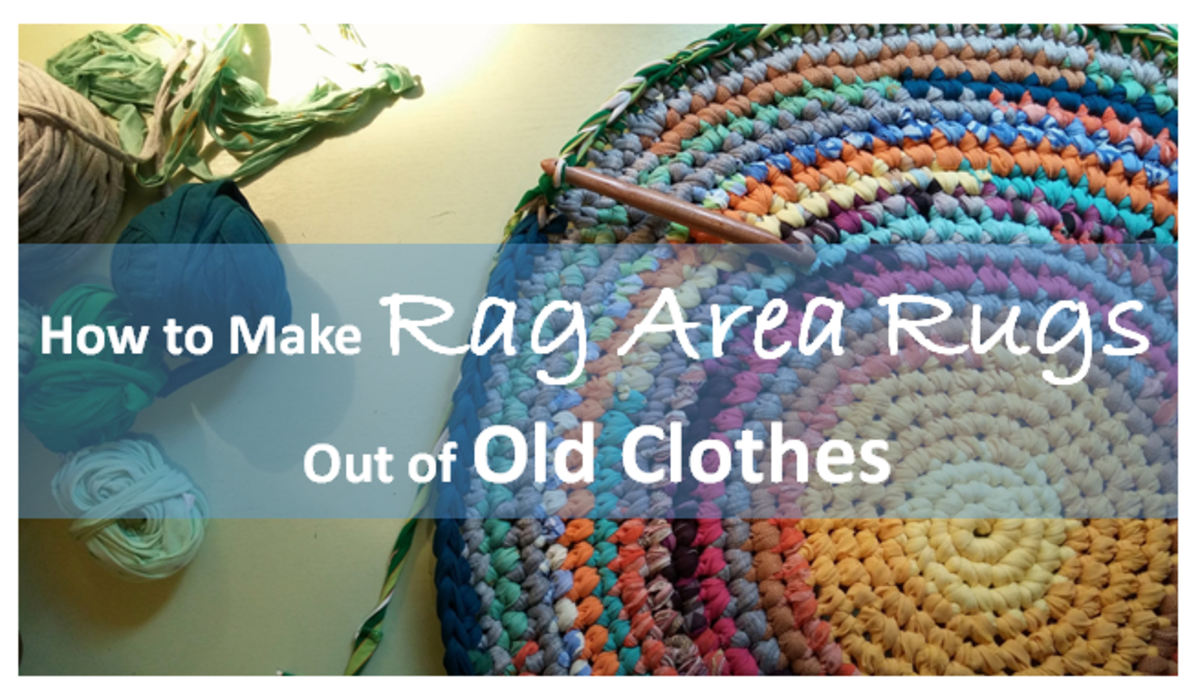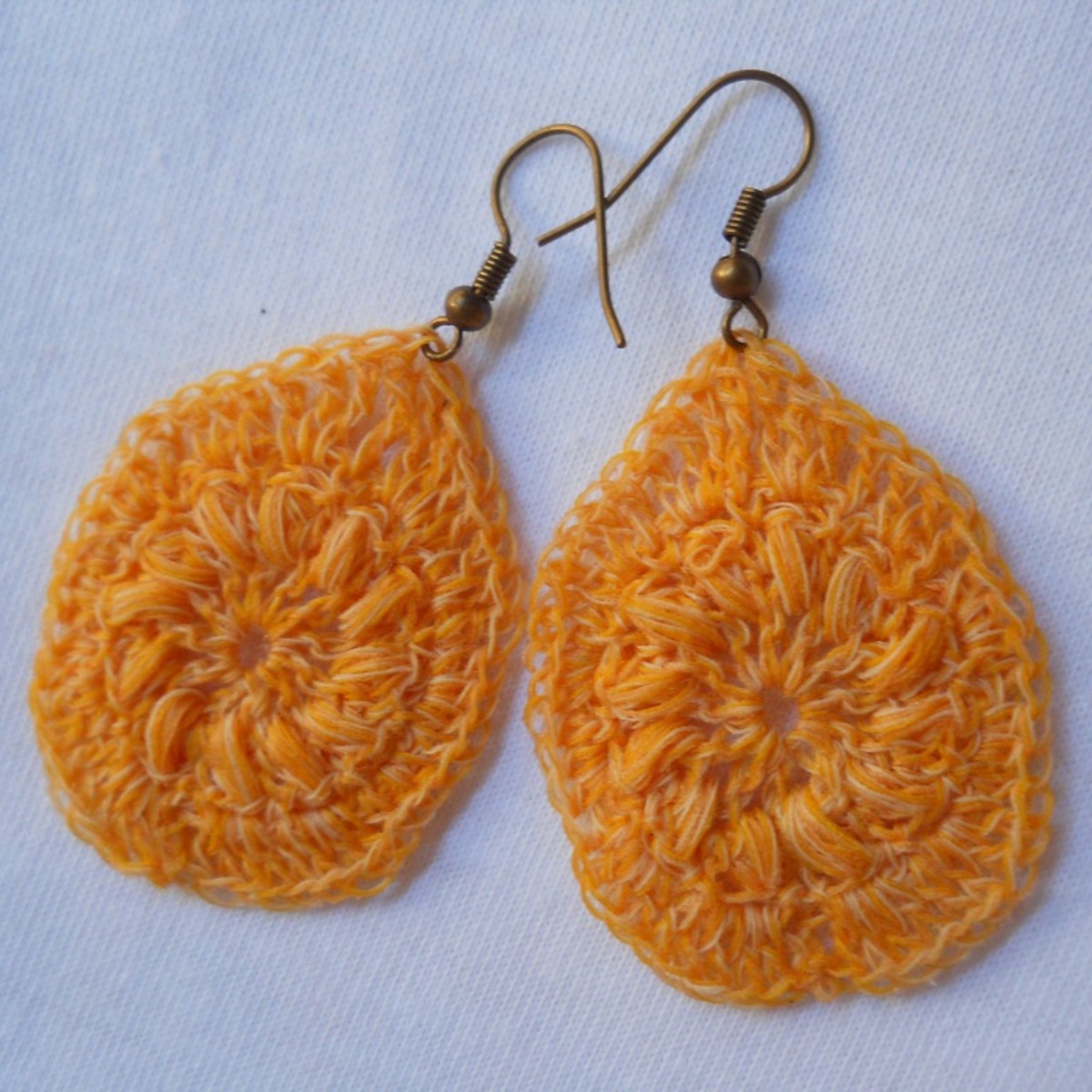- HubPages»
- Arts and Design»
- Crafts & Handiwork»
- Textiles
All That Yarn - Storage
Temporary Storage
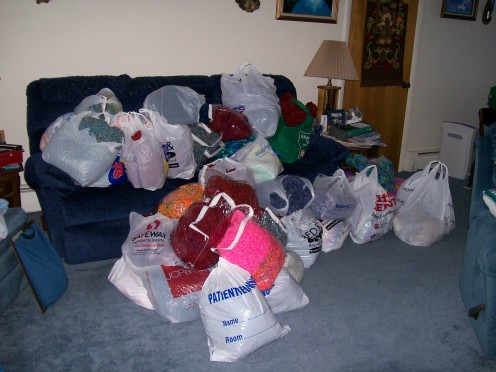
All That Yarn – Storage and the Yarn Stash
How you store the yarn in your yarn stash is kind of important. The type of fiber is also critical when figuring out how to store it. You can’t store natural fibers like wool (in any percentage from 1 to 100) without something like aromatic cedar or mothballs to repel pests.
I would find something other than mothballs as they do have a strong smell themselves that will transfer to the yarn. Same goes for other synthetic fibers. If you don’t want it to smell bad, be sure to NOT store it in a plastic trash bag in the corner of the damp musty basement. I’ve had more “donated” skeins that smell musty and that odor just does not come out. I end up donating it to some other organization that either uses little bits to tie quilts or kids’ crafts that may involve glue. Somewhere it can be useful and the smell won’t matter.
Acrylic yarn can get “smelly” from bad storage. It is a synthetic so it picks up odors. Even washing doesn’t always get rid of it once the stench is “soaked” into the fibers.
I keep my acrylic yarns in plastic storage bins in the basement and in the garage, and have not had a problem with bad smells getting into the yarn. But then I also do not run the car engine in the garage so that particular smell does not linger long enough to get into anything that I’m storing out there.
Storing by project.
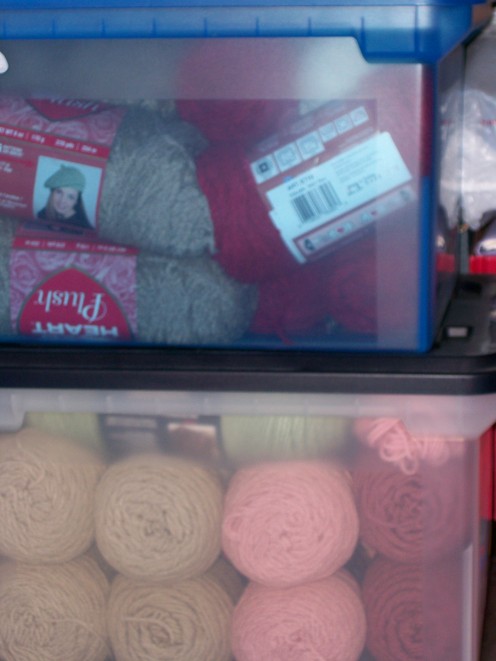
Maybe try this...
A better way to store your yarn is in an airtight container like a large plastic storage bin. Similar to the ones they advertise for holding ornaments or decorations. Include a dryer sheet like Bounce that has a light, clean scent [because even a heavy scent can be as bad as a musty smell] with the yarn. This can help it smell nice when you get around to knitting or crocheting with it. I have received yarn from an eBay auction win that came with dryer sheets in the bags with the yarn. It smelled clean and new, even though it was older yarn from an estate sale.
Getting yarn from a warehouse or shop online usually comes without scents. But don’t let it sit in the cardboard box until you can get around to using it. Unpack the yarn and get it properly stored right away.
Sometimes the cardboard box gets wet during shipping, and that can harm the yarn if it is left in the box.
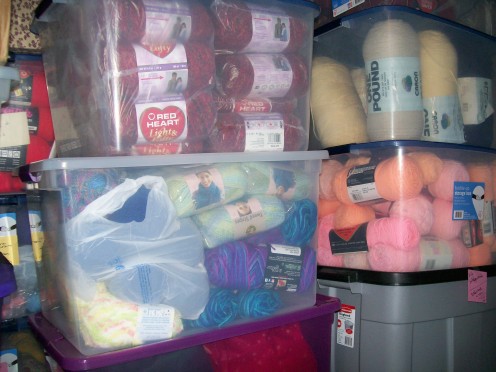
How I handle my yarn "stash"
For my own yarn, I store my stash in clear-sided 66-quart bins or ones close to that size. That way I can see the colors of the yarn or project stored in that box, as well as how much yarn I have on hand. A nearly empty bin tells me it’s time to get more of that color since I obviously used a lot of it for my various projects. For example, right now all I have are 4 -6 skeins of Red. And I just purchased those since I knew I was out of that color.
I have some grey Rubbermaid bins that are not clear, and I use those for the Black, White, and Off-White. I put 3x5 cards or Avery box labels with the Color Name written out on them and tape them to the bins. That way I don’t have to go through all the solid-color bins (when I don’t have clear-sided ones) to find the yarn colors I’m looking for at the time.
In the past.
Before they started manufacturing the clear sided big plastic bins, we used the cardboard storage boxes that were made for closets and under the bed. This didn’t work well as yarn can be heavy when in large quantities and the cardboard bent around the middle or the lid bent due to the weight of stacking one on top of the other.
I have replaced most of the cardboard with plastic bins now, and find the plastic bins sturdier than cardboard. I also try not to stack them higher than I can reach. This keeps the over-all weight down to prevent buckling or caving-in of the bottom box from the weight piled on top.
It is amazing how much yarn can weigh when you have a lot of it together in a box or bin. If you have smaller amounts of yarn, use smaller bins but try to keep them all about the same size so that you can stack them. I find that 3 or 4 bins high is about all the weight that the bottom bin can hold up. A sturdier bin on the bottom is the best idea for stacking bins. Also, shelves could be helpful in storing the bins. Fit bin size to the shelf size.
Some examples.
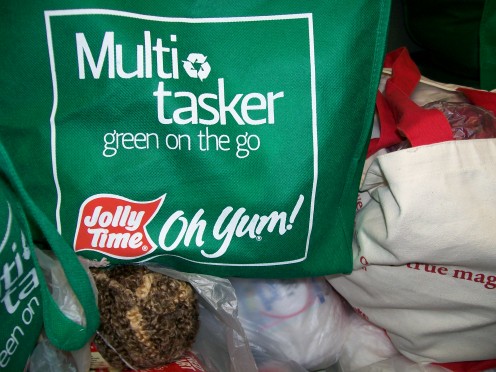
Storing projects for easy access.
I also use recyclable grocery sacks / bags for putting together my projects. I get the free ones whenever I can find them. For example, ones that are free from the Jiffy Pop popcorn company (see the offer on the boxes, where for just 3 UPC codes you get one free bag), sometimes I get ones from the local Staples when they have their free bag and percentage off what-can-fit-in-the-bag sale. I even have ones from my friend that she got from various places. like an earth-friendly one from the Hard Rock Cafe. I also have some fun bags from the Disney Store that work well. They are made of various materials but hold up well when stuffed with yarn and pattern for my projects.
Canvas bags are the best kind as they won’t stretch or tear when stuffed with yarn. Since I do a lot of afghans, bigger bags are better for my use. I often have several projects going at once and each in its own bag or bags. I use smaller bags for take-along projects like scarves or small toys. I found plain canvas bags at Hobby Lobby for a low price and they came in several sizes so I had my pick of what I needed for each project. I try to avoid the stiff plastic bags since they have a tendency to snag the yarn on the bag’s edges or inside. What works nice for groceries doesn’t always work for yarn.
To organize my project I start with a bag and put the pattern that I’ve printed off in a sheet protector, the skeins or balls of yarn for the pattern, and the crochet hook or knitting needles along with a couple of yarn needles (one always seems to disappear). That way I can grab the bag to keep by my chair to work on, or to take to a friend’s house for some stitching time. Also, the yarn stays clean (as long as the cat doesn’t get into it and steal a ball) and I have what I might need all together in one place. Should a project be too big for one bag (like needing lots of different colors of yarn for an afghan), I try to use a second bag of the same design to keep them sorted out.
There are many online patterns (free ones) to print out for various projects. I also photocopy book patterns so that it is easier to use than trying to keep a book open to the page I am using, and less weight to carry around in the bag.
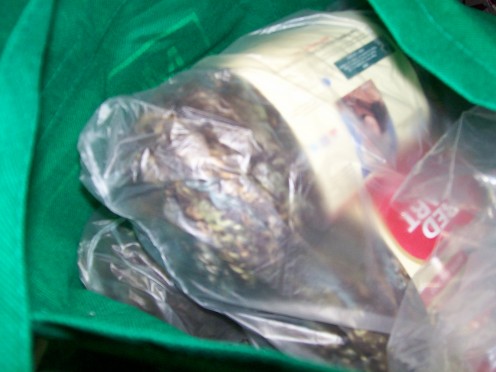
Grandma's storage solution.
The plastic bags that multiple skeins come in from the online yarn shops are all right to keep the yarn in for a while. After all, the shops and warehouses keep these for a few months so they should be acceptable storage containers.
I remember some of my grandmother’s Red Heart 100% Wool yarn was in pressed-paper/cardboard boxes (not corrugated cardboard) and she stored the boxes inside an old non-functional deep freeze in her basement. Since she had the occasional basement flooding over the years, it was amazing that they were not soaked or even damp when I found them. They also smelled all right considering they were about 25+ years old. My estimate of the yarn's age was based on the fact that the colors were the same as the afghans that she had made each of the granddaughters for Christmas back in the early/mid 1970s. Just my guess that she had ordered several boxes of the colors that she used and had kept the leftovers for another project but just didn’t get around to it before she passed away and I never had a chance to ask her about her yarn stash.
Decorations re-worked into a blanket
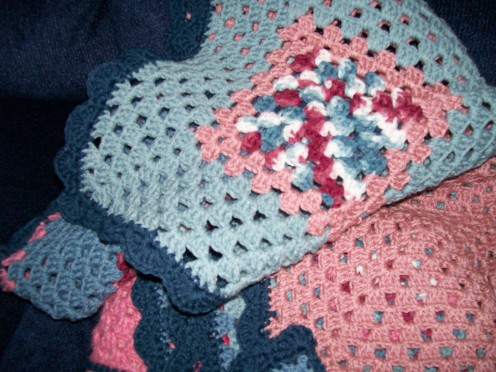
Other places.
I’ve known people that keep their yarn in dresser drawers, closet shelves, and various other places. It depends on what they are making and how they organize their own stash. Most people don’t open up their yarn storage spot to show it off. Maybe guilty feelings about having “too much yarn” makes them shy about sharing their hiding spaces.
Once I was given leftover yarn from a person who had rolled it into balls to put in a basket for a design element in her living room. She did not have any pets, so the yarn was not slobbered on. Also, since it was sitting out in the room air, it did not have an odor and was only a little dusty.
My cat on some afghans.
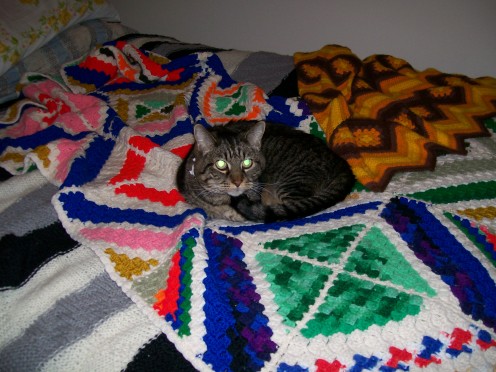
Yarn and Cats
Since I have cats I can’t leave balls of yarn sitting out or they will become cat toys. I used to have a cat that would “steal” an entire skein as if it were prey and she was dragging it back to her den to finish it off. I’ve had cats that will roll a ball across the floor and then chew through the strand lying on the carpet leaving me with a wet, and short, piece of yarn that I might not notice until it gets to my fingers while I’m crocheting. Eww! This is why I now keep my yarn for my projects in bags that I can at least slow down the cat who wants a nice tasty yarn to chew on.
To me, Acrylic is a nice yarn in that it washes up well and can be tossed in the dryer to be fluffed up. There are places that say loosely rolling a ball of used yarn and putting it in a pillowcase to run it thru the wash works. I have tried that myself, once, but that was so long ago that I don’t remember the outcome. Since I haven’t done it again, it must not have worked as well as the source thought it would do, or it was a whole lot of trouble to do that much effort. I remember trying it to get the smell out and I’m pretty sure I found out that it didn’t work. The best thing is to not let it get stinky in the first place, and if an accident happens on the afghan or sweater or hat, etc. be sure to get it washed as soon as possible.
I have older afghans that I use for my cats’ beds. Since they are cats they sometimes have a hairball problem and it lands on the afghan. Because I use wash-and-wear acrylics, I just toss it in the washer (with mild soap) and then the dryer to fluff it back to shape. Acrylics wear very well, as long as the yarn ends are tucked in and there are no holes that will “spread” when the article is stretched and pulled by the machines. I have afghans that I made back in 1977 (when I started making afghans) that are still in good shape. They get washed a few times each year, and hold up very well. The colors don’t seem to fade as I use cold water and low dryer temperature when I clean them.
Just make sure that cats (or dogs) do not eat your yarn. It is very harmful to their digestive system and can even cause death. I have watched as a cat chewed my strand of yarn while I was working on it. That left me with a "cut" piece which was wet with cat drool. Then I end up with a knot in a place I didn't expect, and I had to rinse it and then wait for the yarn to dry before I could use it. Give the cat a cat toy instead to distract them from your yarn.
In conclusion.
How you decide to store your yarn may depend on a lot of factors. Like: how much yarn; how much storage space you have to donate to the yarn; how long you need to keep it in storage; and what you plan to do with it eventually.
If you are like me and have a lot of yarn that you go through fairly quickly or need a lot of colors to chose from for your designs, maybe long term storage would be a good idea. In crochet/knit terms that would be in months/years not days/weeks for storage.
If you tend to do one project at a time and only buy enough yarn for that project, then long term storage would not be necessary for you. It all depends on what you want to do with all that yarn.







